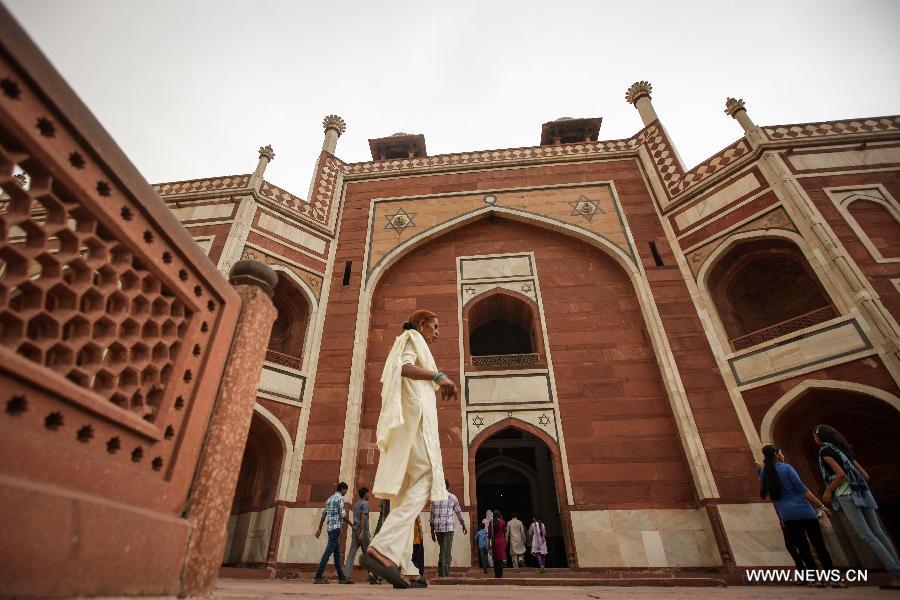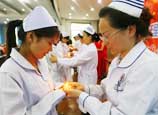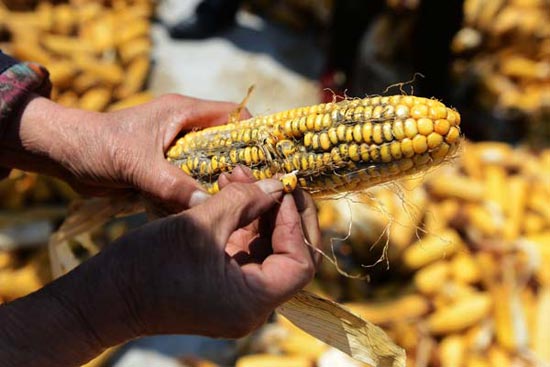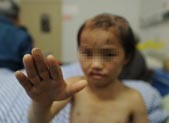
I. Protection of Human Rights in Economic Construction
China has a population of over 1.3 billion. For such a populous country, it would be impossible to protect the people's rights and interests without first developing the economy to feed and clothe the people. Development is the key to solving all existing problems and facilitating progress of human rights in China. Only by pursuing healthy and sustainable economic development can China consolidate the material foundation for the people's happiness and wellbeing, and protect their rights to subsistence and development. For many years, China has taken economic construction as the central task and, through economic growth, expanded rural and urban employment, increased the residents' income and family property income, provided the people with better food, clothing, housing, transportation and other daily necessities, safeguarded the rights and interests of disadvantaged groups, and effectively protected the citizens' economic rights and interests.
The people's living standards are constantly on the rise. Steady yet relatively rapid economic development has provided the foundation for a better livelihood for the Chinese people. Despite the slowdown of economic growth in the world's major economies and the manifestation of various risks, China's GDP grew by 7.8 percent in 2012 and the rise in the CPI (Consumer Price Index) fell back to 2.6 percent. China's annual grain output in 2012 reached 589.57 million tons, registering the second nine-year consecutive growth since the founding of the People's Republic of China in 1949, topping the 500-million-ton mark for six years in a row. Food is people's paramount necessity. For a country with more than 1.3 billion people, a nine-year consecutive growth in grain output was of particularly significant importance, as it laid a solid foundation for the Chinese people to live a happier and better life. The living and production conditions in rural areas have kept improving. From 2008 to 2012 China built or rebuilt 1.465 million km of rural roads, renovated 10.33 million rural houses in disrepair, solved the problem of drinking water safety for over 300 million rural residents, and provided power to 4.45 million people in areas previously devoid of access to electricity. At the same time, urban and rural residents' income has been growing relatively rapidly. The annual per-capita net income for rural residents reached 7,917 yuan in 2012, up 13.5 percent over the previous year or 10.7 percent in real terms. The annual per-capita disposable income for urban residents was 24,565 yuan, an increase of 12.6 percent or 9.6 percent in real terms year on year. The income growth of urban and rural residents in real terms outpaced the GDP growth, while the income growth of the rural residents in real terms surpassed that of the urban residents. In 2012 the Engel coefficients (i.e., the proportion of food expenditure in the total consumption spending) per rural and urban household were 39.3 percent and 36.2 percent, respectively. By the end of 2012 car ownership had reached 59.89 million, an increase of 20.7 percent over the previous year, among which 53.08 million were private cars, an increase of 22.8 percent. There were 21.5 cars for every 100 urban households, an increase of 15.5 over 2007. The combined number of fixed and mobile phone users reached 1,390.31 million, an increase of 118.96 million over that at the end of the previous year. There were 82.6 mobile phones and 20.7 fixed phones for every 100 people. There were over 564 million Internet users in China, among whom 420 million access the Internet via mobile phones. The Internet penetration rate reached 42.1 percent. The number of domestic tourists in 2012 totaled 2.96 billion, and the number of Chinese citizens making trips abroad reached 83.18 million, up 12.1 percent and 18.4 percent,respectively, over the previous year. Among them, those making trips abroad for private purposes reached 77.06 million, a year-on-year increase of 20.2 percent, accounting for 92.6 percent of the total. Active and steady efforts have been made to promote urbanization. From 2008 to 2012, a total of 84.63 million rural laborers moved to cities and towns, raising the urbanization rate from 45.9 percent to 52.6 percent and effecting a historic change in China's urban-rural structure.
【11】 【12】 【13】 【14】 【15】 【16】 【17】 【18】 【19】 【20】
【21】 【22】


















 Father arrested for 'torturing' teen daughter
Father arrested for 'torturing' teen daughter


![]()
